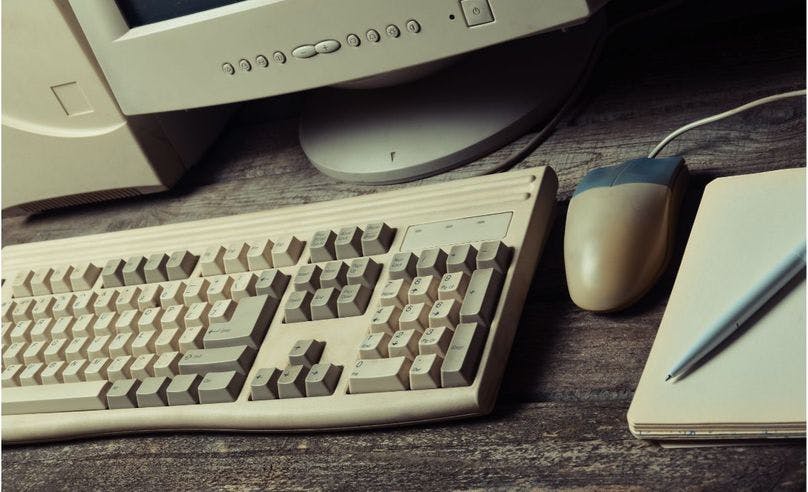Classical Typing: All You Need To Know

Typing, as we all know, is an indispensable skill. In my previous articles, I talked about the history of Typing and how it began. How typing became what we know it today. Today, let's take a different approach and look at how typing was in our childhood. In this blog article, I am briefly going to take you through what classical typing is. I'm talking about the time when LEDs were not a thing. Smartphones were rare. And monitors were big, bulky, and ugly. The time when computers were still not owned by 49% of the people. When computers had a CD or DVD drive with a 3.5" floppy drive. Internet was slow for most people, and downloading large files was a David and Goliath story. I'm talking about the early 2000s. Come with me as I dive deeper down memory lane so you can enjoy this piece.
Classical Typing what is it?
In the context of touch typing, "classical typing" generally refers to the traditional method of touch typing instruction that emphasizes using all ten fingers to type efficiently and accurately. While there are various methods and techniques for learning touch typing, "classical typing" is commonly used to distinguish this traditional approach from other methodologies or newer techniques.
Mechanical typewriters with QWERTY layout were used first as classical typing. These keyboards had tactile feedback that made typing a tad bit more fun. The click when a key was registered was worth all the practice. Personal computers and later laptops with physical keyboards were the norm. Here is what typing in the early 2000's looked like;
- Physical typewriters with raised keys let users feel the keys as they pressed them.
- The QWERTY layout, much like today, was the dominant layout with minor changes based on language and the region. That's why I say QWERTY is synonymous with typing.
- Schools and Offices offered typing classes. These were focused on typing techniques like touch typing.
- This was also the time that saw the rise of email, instant messages, and online forums. Who doesn't know about Myspace, right?
- Document creation was at an all-time high thanks to word processing software.
- Laptops gained popularity as they often featured built-in keyboards. Allowing users to type on the go.
The Future of Classical Typing
When I use the term future for classical typing, it means from the present day forward. Now, if we take a look at the present day, classical typing has lost the "oomph" it once had. We've already started moving away from touch screens into VR. And with the amount of work being done on technologies like voice-to-text, typing as we know it today might even cease to exist. If you want to learn in detail about the future of typing, check out my article
-> Typing Technology: The Past and The Future
Tips to Improve Classical Typing
Classical typing is the basics of typing. Just like any other skill, if you have your basics covered, you can hone your skill according to what the situation demands. Here are some tips that can help improve your typing basics;
- Always make sure your posture is correct. Sit with a straight back; do not crouch over to your computer.
- Keep your wrists supported. Wear wrist support if need be.
- Do not sit too close or far from your screen, as it can affect your vision.
- Do not rest your wrists on the table or the keyboard.
- Keep your elbows away from your body and your fingers hovering over the home row keys.
- Do not use the hunt-and-peck method. Practice regularly and learn touch typing.
If you want more tips and productivity tricks, then join our email list in the bottom of this page.
Conclusion
In the end, classical typing is the basic form of all advanced typing. If you learn to touch type, you've, by default, learned classical typing. Although the future for classical typing looks iffy, if you've got your basics covered, you can easily match your skills to industry standards. One thing every typist should remember is not to take typing for granted; you've to keep polishing your skill if you want to stay relevant with the technological advancements.
